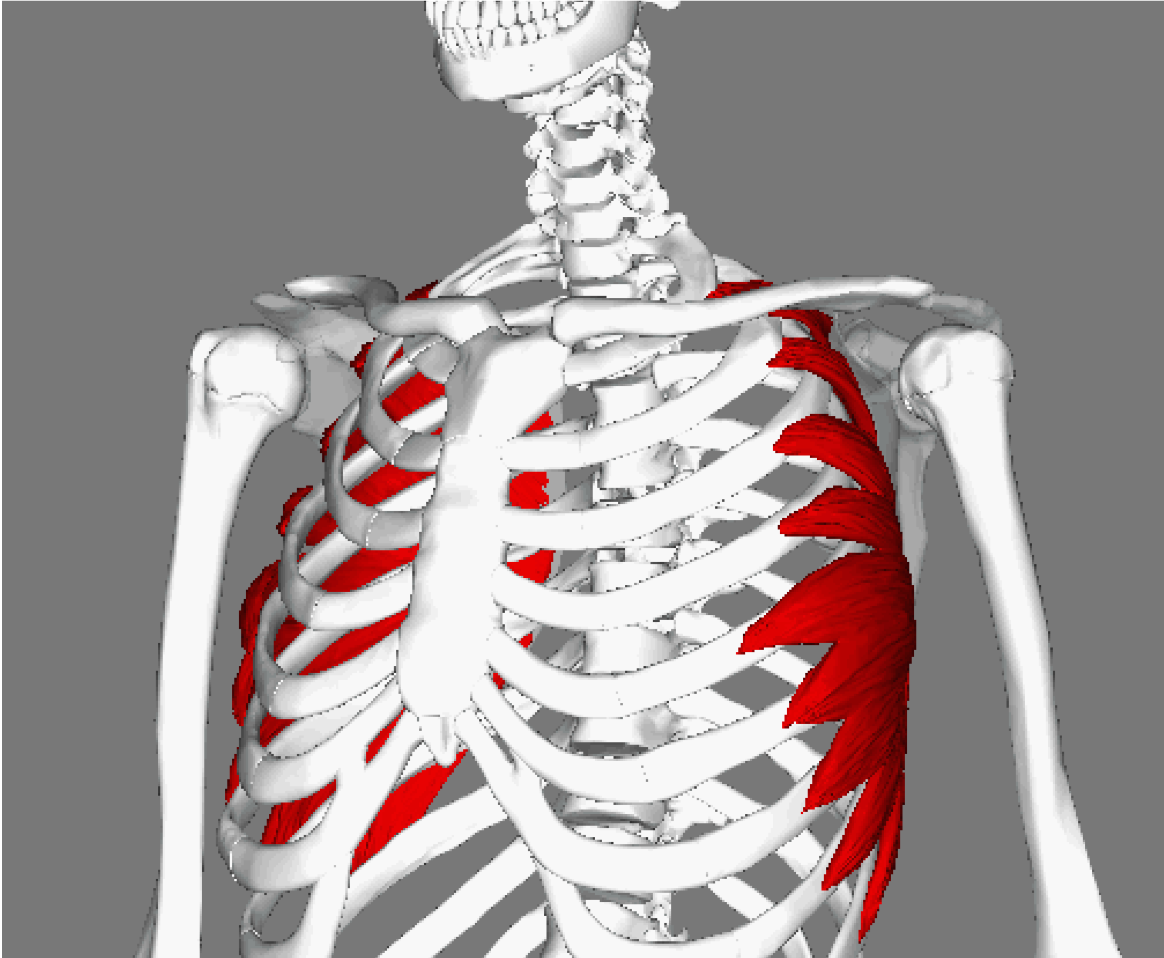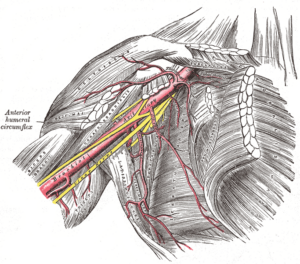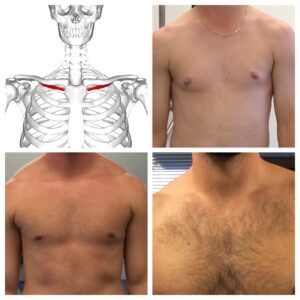
An Overlooked Function of Serratus Anterior
Serratus anterior gets:
1. A lot of love as a scapular protractor
2. Some love as a scapular upward rotator
3. Even less love as a posterior tilter of the scapula
4. Just about zero love for its impact on rib internal/external rotation.
Most importantly, you’ll see that the upper fibers of the serratus anterior attach on the first rib – the very bone that’s removed during thoracic outlet surgery.

Images by Anatomography – en:Anatomography (setting page of this image), CC BY-SA 2.1 jp, https://commons.wikimedia.org/w/index.php?curid=27010000
When the serratus fires, it depresses the first rib and clears space under the clavicle for important nerve and vascular structures to pass.
If you take a second to think about it while looking at the anatomy charts below, you’ll appreciate that this attachment effectively makes serratus anterior an antagonist to the scalenes and subclavius, which both elevate the first rib.
This is one reason why a lot of the thoracic outlet syndrome cases you’ll encounter aren’t your classic kyphotic (hunchback) posture, but actually a lot of flat thoracic spine, heavy scapular downward rotation/depression, and horizontal clavicle presentations.
Getting serratus anterior going favorably impacts scapular upward rotation (which brings the clavicle up), first rib positioning, and the ideal convex-concave relationship between the rib cage and scapula.
Fun fact: serratus anterior also indirectly impacts contralateral thoracic rotation, but that’s a post for another day!
If you’re looking to learn more about how I assess, coach, and program for the upper extremity, be sure to check out Sturdy Shoulder Solutions.







